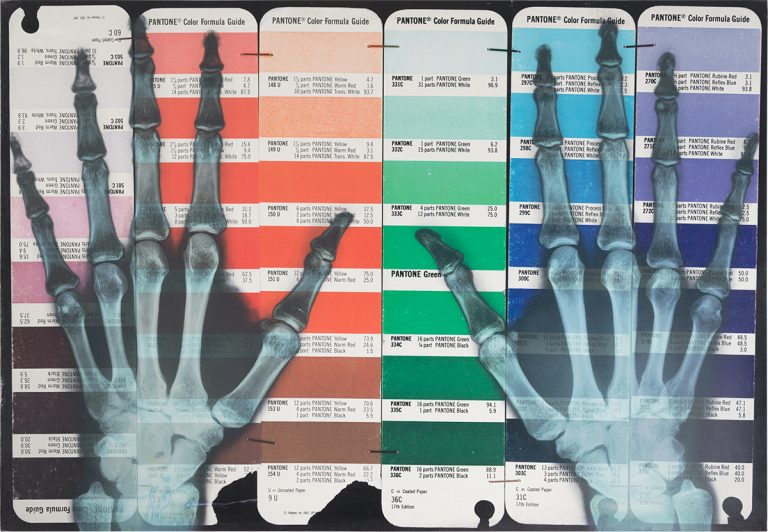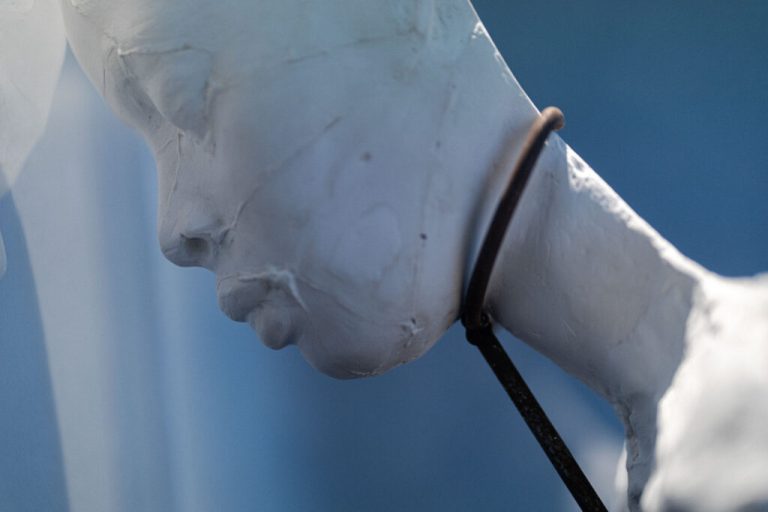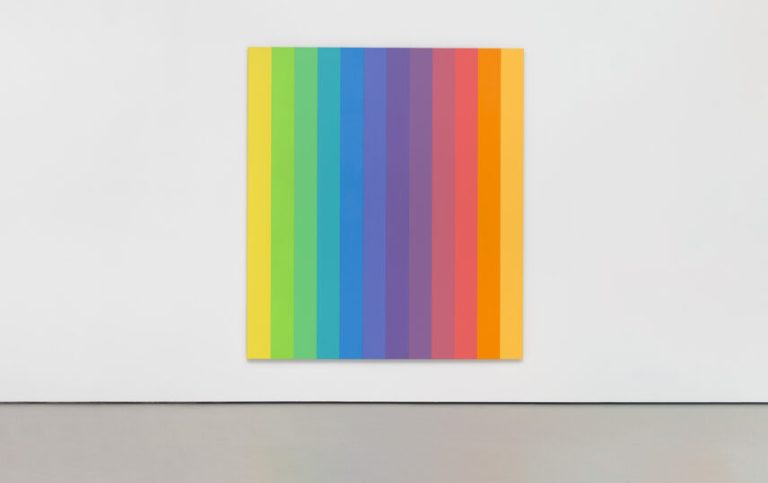Paris. As Jack Lang, acting president of the Arab World Institute (IMA) reminds us, this season is “a presentation of Palestine in its thousand and one colours, intellectual, creative and combative”. It is true that this project is an ambitious manifesto for Palestinian creation. The season, which consists of three exhibitions and a rich program of cultural events until the autumn, struggles to show unity: the exhibitions are displayed in three different places in the IMA building.
The collection of the future Palestinian museum
The main exhibition installed in the temporary exhibition rooms in the basement presents a selection of works from the future Museum of Modern and Contemporary Art of Palestine, an initiative which is the subject of a partnership agreement between its founders and the IMA, as Commissioner General Elias Sanbar (former Palestinian Ambassador to Unesco) points out. This collection, already shown at the IMA in 2020, comes from donations from artists or patrons, including Ernest Pignon Ernest, Vladimir Velickovic, Henri Cueco and Julio Le Parc. Elias Sanbar insists that “it will not be a private museum, because it is the duty of a State to make culture available to its citizens”. Exhibiting this collection is therefore a militant gesture, especially since the museum has not yet found a place to settle in the Palestinian Territories.
We can regret the lack of guidelines for this set, apart from what Elias Sanbar calls “a bet on the future, fairer and more open”. The labels of the works are also reduced to a strict minimum, and there is no chronological frieze: visitors risk missing out on the political and historical context.
In this muddled exhibition, the room dedicated to the poem by Mahmoud Darwish, written in reaction to the massacres of Sabra and Shatila, also stands out. An exceptional archive from 1983 shows the poet declaiming from the rostrum of the Palestinian National Council in Algiers. His voice resonates like a red thread within the exhibition, but the poem would have benefited from being fully translated, because only the titles of the stanzas are. Similarly, the superb calligraphy inspired by the poem under the brushes of Hassan Massoudy and Rachid Koraïchi are reduced to their purely ornamental dimension since they have not been translated.
A museum in the clouds
The presentation of the “Sahab” project in Gaza (“clouds” in Arabic) is very interesting. It’s a museum “without walls” as defined by the artist Salman Nawati who signs the model of this utopian museum. Between construction in the clouds and digital collection, the project relies on virtual reality and a smartphone application to “to reclaim a territory”, according to the associate curator, Marion Slitine. She specifies that the project is supported by the French Institute of Gaza, and that an architect is part of the collective, so that in the long term this museum becomes real (probably thanks to private funds).
More solid and more concentrated, the second exhibition in the basement is devoted to Palestinian photography or photography having Palestine as its object. Alongside a collection of Orientalist prints from the 1870s-1890s from the Photoglob Zurich company, contemporary works analyze the fragmentation of the Palestinian territory. If Taysir Batniji chooses humor and presents bombed houses in Gaza as real estate for sale, Hazem Harb superimposes traffic prohibition signs on old postcards of Palestine. The current territory is constantly reworked and the borders modified, in contrast to the frozen Orientalist photographs: the dialogue works, especially since the labels here are very detailed.
Still in the humorous register, the metro lines imagined by Mohamed Abusal underline the absence of infrastructure in Gaza: between the carefully drawn plan, the metro tickets, the photographs of the stations and the logo (a big red M), the he artist who studied Fine Arts in Paris constructs a remarkable territorial dystopia. Marion Slitine and Elias Sanbar recall that “Palestinians show a form of self-mockery” characteristic, a feature that the exhibition highlights.
The curators have also chosen more sensitive works, such as the photographs of braided hair by Safaa Khatib, a discreet evocation of the fate reserved for young Palestinian girls imprisoned in Israel. The sound testimonies that accompany the prints give them a political dimension. Similarly, the black and white portraits of workers by Raed Bawayah subtly underline the multiple obstacles to movement between Israel and the Palestinian Territories.
Compared to this beautiful exhibition, the one dedicated to Jean Genet’s suitcases seems very poor despite an interesting subject, especially since it is housed in the IMA museum, on the fifth floor, and poorly indicated by the signage. This “Palestine” season lacks a backbone, even if the separate exhibitions offer moments of emotion.







